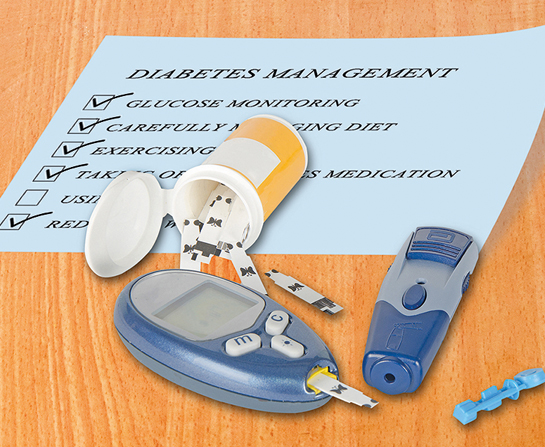T2DM & You
April 28, 2022 Return

Dr Hew Fen Lee
Consultant Endocrinologist
You have surely heard of diabetes in the past, but after being diagnosed with the condition, diabetes is no longer an issue that affects other people. It is now affects you.
Before you can take control of your health and life, you should know the facts about diabetes, such as why it is happening to you and what it can do to you. Such information may be harsh or frightening, but the more you know about diabetes, the more you will understand why you need to commit to the lifestyle changes that will help you control the condition.
You will understand that all is not lost, and there is no need to give up when the going gets tough. There are many diabetics out there who live healthy and fulfilling lives by making the necessary changes, and there is no reason why you cannot be one of them.
So let us take a better look at type 2 diabetes mellitus (T2DM).
An issue of insulin resistance
Many people believe that T2DM is a disease caused by eating too much sugar. This is not true.
“T2DM is a problem caused by insulin resistance,” explains Dr Hew. “Patients with T2DM are usually insulin resistant, which means they require more insulin to control their glucose level, more than their body can produce.”
First, let us start by taking a look at the pancreas. Our pancreas is an organ located behind the lower part of the stomach, and it produces insulin, the hormone responsible for regulating blood glucose levels.
Our body needs glucose for energy. Our digestive system breaks down the carbohydrates in our meals to glucose. Therefore, after each meal, the amount of glucose in the blood typically rises.
In a healthy person, the pancreas detects this rise in blood glucose level. It then releases insulin into the bloodstream, and insulin attaches itself to the appropriate cells in our body. The attachment of insulin alerts these cells to begin absorbing glucose from the blood stream. This action helps to remove excess glucose from the bloodstream, keeping the blood glucose level within a healthy range. The more glucose is present in the bloodstream, the more insulin would be released by the pancreas.
In someone with insulin resistance, the pancreas produces insulin each time it detects high blood glucose level in the bloodstream. However, the cells of the body do not respond normally to insulin.
We don’t know all the causes of insulin resistance, but researchers strongly believe that excessive weight and lack of physical activity are 2 important and significant causes. Most patients with T2DM are overweight and they lead sedentary (inactive) lives.
According to Dr Hew, because of insulin resistance, more insulin is required to control the blood glucose level. This exerts pressure on the pancreas to produce higher amounts of insulin than normal.
“Over time, the insulin resistance builds up to a level at which the pancreas can no longer keep up with,” says Dr Hew. “A shortfall of insulin occurs, and the blood glucose level in the blood is no longer controlled adequately, causing it to rise above the healthy limit.”
Insulin resistance slowly builds up over time, so many people may not know that they have T2DM until the condition has progressed to a later stage and controlling it becomes more difficult.
So what happens now?
If left unchecked, T2DM can lead to various health conditions (complications) that can severely affect the patient’s quality of life and can even possibly lead to early death.

According to Dr Hew, T2DM patients are at risk of the following:
- Eye problems (retinopathy).
- Kidney problems, including urine infection and kidney damage.
- Damage to blood vessels, which can lead to heart problems, stroke and poor blood circulation. The latter can give rise to poor sensation, especially in the feet, increasing the risk of nerve damage, infections, ulcers and tissue death and possibly requiring amputation.
Managing your diabetes
According to Dr Hew, there are 3 cornerstones in good management of diabetes, all of which should be practised.

All 3 work together to help control T2DM. We cannot just focus on 1 aspect alone, which is why it is important to work closely with our healthcare team to come up with a plan that helps coordinate all 3 aspects of T2DM management in our lives.
Why manage T2DM?
Managing the condition is important to slow its progression and reduce the risk of health problems that can arise over time. The principle of T2DM management is to adopt a healthy lifestyle which should apply to anybody with or without diabetes. Dr Hew points out that a good control of diabetes often allows the patient to lead a healthy and normal life while minimising the complications normally associated with T2DM.
Dr Hew believes that, when one is armed with the right knowledge and a bit of determination and discipline, achieving good diabetes control is not too difficult. “You should make health your No. 1 priority now,” he urges. “Once you keep this in mind, everything else becomes easier.”
If you like this article, do subscribe here.

















